Factors to Consider When Choosing Making Tax Digital (MTD) Compatible Software
HMRC’s Making Tax Digital (MTD) initiative is reshaping how businesses handle their VAT returns in a significant move towards a fully digital tax system. This article provides a comprehensive guide to choosing the right MTD software for your business.
Understanding MTD for VAT
Making Tax Digital for VAT (MTD for VAT) is a significant part of the UK’s initiative to streamline the tax filing process. Businesses must use MTD-compatible software to submit their VAT returns directly to HMRC. MTD for VAT has effectively replaced the old logging system onto the HMRC site to enter VAT return details manually.
Why MTD-Compliant Software is Crucial
Since the rollout of MTD, VAT-registered businesses with a taxable turnover over the VAT threshold need to use MTD-compatible software to file their VAT returns. Compatible software for Making Tax Digital connects directly to HMRC, enabling you to submit VAT returns directly. Additionally, MTD-compliant software helps businesses keep digital records, which is a crucial requirement of MTD.
Evaluating MTD Software Providers
The market offers a wide range of MTD software providers, each offering different features at different price points. You must choose the MTD software for your business based on its needs. Some essential factors to consider include ease of use, customer support, integration capabilities with your current accounting software, and the cost of the software.
The Role of Bridging Software in MTD Compliance
Bridging software offers a solution for businesses that are content with their current accounting software but need to comply with MTD. Bridging software links non-MTD-compliant software with HMRC’s systems, enabling businesses to comply with MTD without changing their current software.
Moving from Manual to Digital Accounting
MTD requires VAT-registered businesses to keep digital records of all their transactions. This significant shift means businesses must adapt their practises and may need to implement new software to manage digital record-keeping. Understanding the need to keep digital records and how it influences the choice of MTD software is crucial to ensuring MTD compliance.
Key Takeaways
- Making Tax Digital (MTD) for VAT requires businesses to use MTD-compliant software for filing VAT returns and maintaining digital records.
- Choosing the right MTD software involves understanding your business’s needs, evaluating different software providers, and considering usability, support, cost, and compatibility with existing systems.
- Bridging software can help businesses whose current software isn’t MTD-compliant by creating a link between their software and HMRC’s systems.
- The shift from manual to digital record-keeping may require reevaluating your current accounting practices and implementing new software.


Request a call back
Let us know when you would like us to call you back by filling in this form:
Our 5 Star Reviews



Latest News

Making Tax Digital 2023: MPs Criticise Delays and Complexity
Explore the challenges and impacts of the UK’s Making Tax Digital initiative, including delays and the cost burden on taxpayers.

Making Tax Digital: Small Business Review
Making Tax Digital Small Business Review 2023: Understanding the Basics and Preparing for Change Introduction to Making Tax Digital (MTD) Since 1948, Jack Ross Chartered

Making Tax Digital: The Rising Costs and Challenges
Making Tax Digital: The Rising Costs and Challenges Introduction Making Tax Digital (MTD), the ambitious initiative by HM Revenue & Customs (HMRC) to digitise the
